“Those flowers, take them away;
they’re only funeral decorations.
This is The Fall and this is a drudge nation.
Your decadent sins will wreak discipline.
You puritan, you shook me.
I wash every day.”Hail the New Puritan (Charles Atlas, 1987)
Sep
22
Fall

As it says on the tin, it's Mark E. Smith of The Fall (via). DP: John Simmons.
The Northern Hemisphere welcomes the autumn equinox
– The Fall, New Puritan (1979), via
A fictional day in the life of choreographer Michael Clark, company, and friends in preparation of the dance piece New Puritans.
documentary
A Sunday in September (James Hill, 1961)
Sep
17
1961

A large group of bobbies attempts to block off the street in front of an Underground station. They're greatly undone by the large group of protesters behind them (via).
Television documentary about the nuclear disarmament demonstration at Trafalgar Square on September 17, 1961 (description via aforementioned link in the caption).
Die Delegation – Eine utopische Reportage [The Delegation] (Rainer Erler, 1970)
Sep
9
0 h 20 GMT
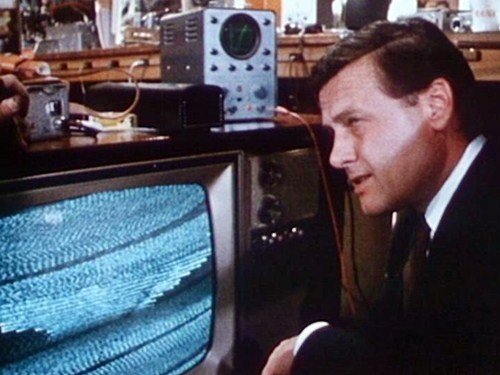
Reporter Will Roczinski (Walter Kohut) picks up mysterieus signals through the ether (via). DP: Charly Steinberger.
We watch the final report by Will Roczinski, who sadly died in a car crash while working on a TV documentary about UFOs and the like. A fascinating early “faux footage” film from the BRD. One can only wonder how the average West German processed the fantastic premise.
“Remember love, remember love
Love is what it takes to dream”
Bed Peace [John and Yoko: The Bed-In] (John Lennon + Yoko Ono, 1969)
Aug
27
white
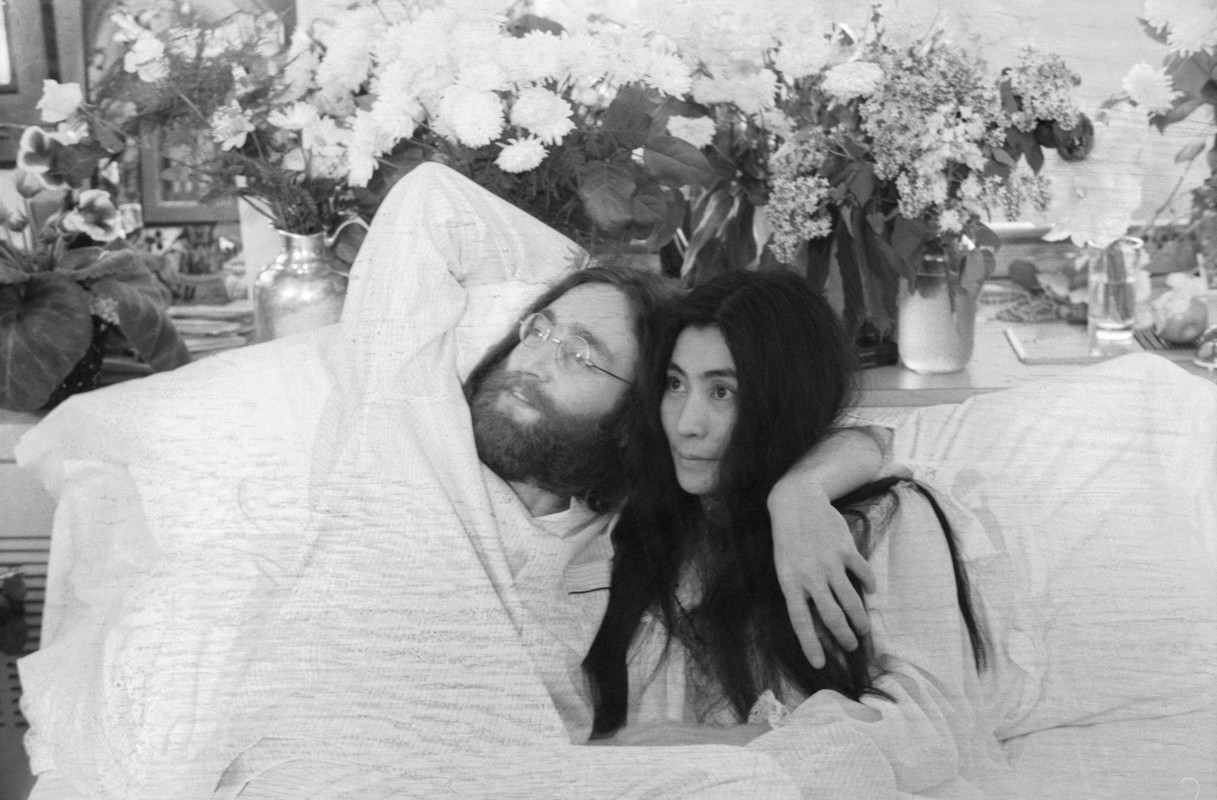
John and Yoko in their bed, dressed in all-white, framed by flowers. DP: Nicholas D. Knowland.
White, in food or fashion*
– Yoko Ono, Remember Love (1969)
While the press expected the newlyweds' “bed-in” to be a scandalous nude affair, the two lovers showed up in all-white – like angels, as John put it. Surrounded by journalists and friends, John and Yoko imaged peace.
* the Bales 2025 Film Challenge for August is not date-related but lists, for the most part, the colours of the rainbow.
آداب بهاری [Adab-e Bahari / Rites of Spring] (Ali Asghar Agahbanaei, 1982)
Aug
11
spring
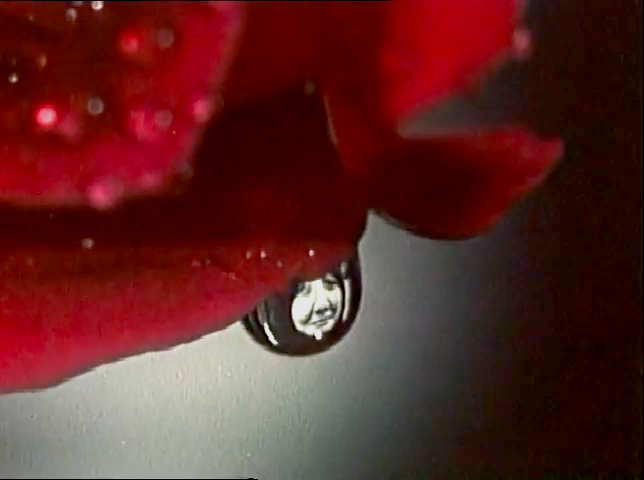
In a dewdrop hanging from a rose, the face of a smiling woman appears.
Dita e Verës, a pagan spring celebration from Albania, celebrated in March: a spring scene*
The restless anticipation of spring. Iran as it was before and after the 1979 toppling of the Shah. While the snow melts away, the Revolution takes place, and fresh buds appear on the rose bushes. A poem.
* the Bales 2025 Film Challenge for August is not date-related.
E-clip-se (Chris Marker, 1999)
Aug
11
1999
.png)
A young woman or child at the Jardin des plantes de Paris wears protective glasses while looking up in amazement during the August 11, 1999 solar eclipse, her baguette a vague memory. DP: Chris Marker.
“That's all the people we've got now. We'll get there somehow.” Хлебный день [Khlebnyy den / Bread Day] (Sergei Dvortsevoy, 1998)
Aug
10
green
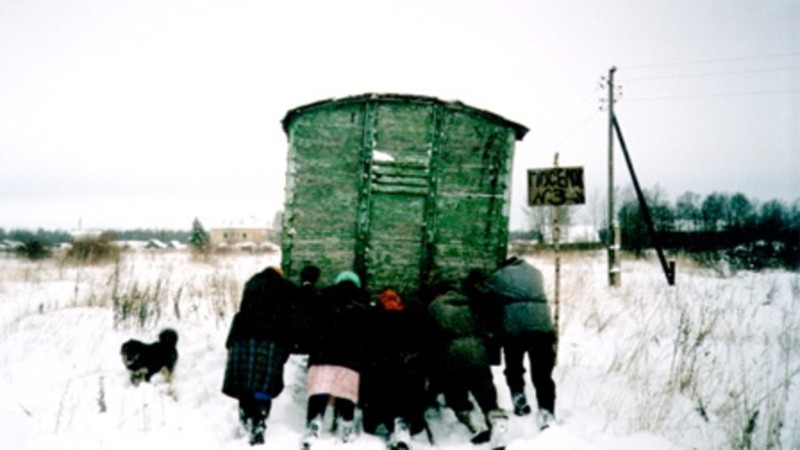
The old folks pushing the cart past the hamlet's name sign. With thick brush strokes, almost too much for the small rectangle, it reads TOWNSHIP NR. 3. DP: Alisher Khamidkhodzhaev.
Green: a building or structure*
Where the old folks' hands push the cart, the green's worn off. That doesn't change anything about its importance. A lifeline, bread, is delivered once a week and with delivered, it means that the carriage is left on the rails, several kilometers away from Zhikharevo, or Township Nr. 3, which in its turn is about 80 km away from Saint Petersburg. It takes the seniors about two hours to get the wagon to their hamlet. We get to witness ten minutes or so. It lasts a lifetime.
As of 2002, only three people lived in Zhikharevo. I wonder how the wain comes home now.
* the Bales 2025 Film Challenge for August is not date-related but lists, for the most part, the colours of the rainbow.
“Tourists prefer the trendy colors, yellow and blue. Pacing fancies, hotels are painted yellow and blue. Blue wins. All women want to be fashionable. All women wear blue, except the English, those learning to swim, and the Germans, who are dedicated to green.”Du côté de la côte [Along the Coast] (Agnès Varda, 1958)
Aug
9
yellow
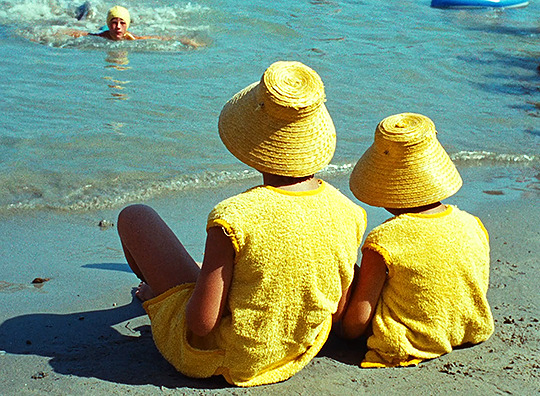
Two people, one big one small, in identical canary yellow robes and straw sun hats on the beach (more here). DPs: Quinto Albicocco & Raymond Castel.
Yellow, in food or fashion*
– narrator
* the Bales 2025 Film Challenge for August is not date-related but lists, for the most part, the colours of the rainbow.
“The entire world is rotten and corrupt… to us they're dead people who refuse to lay down, they're cadavers”8-8-88 Church of Satan Mansonite Rally (Boyd Rice, 1988)
Aug
8
1988
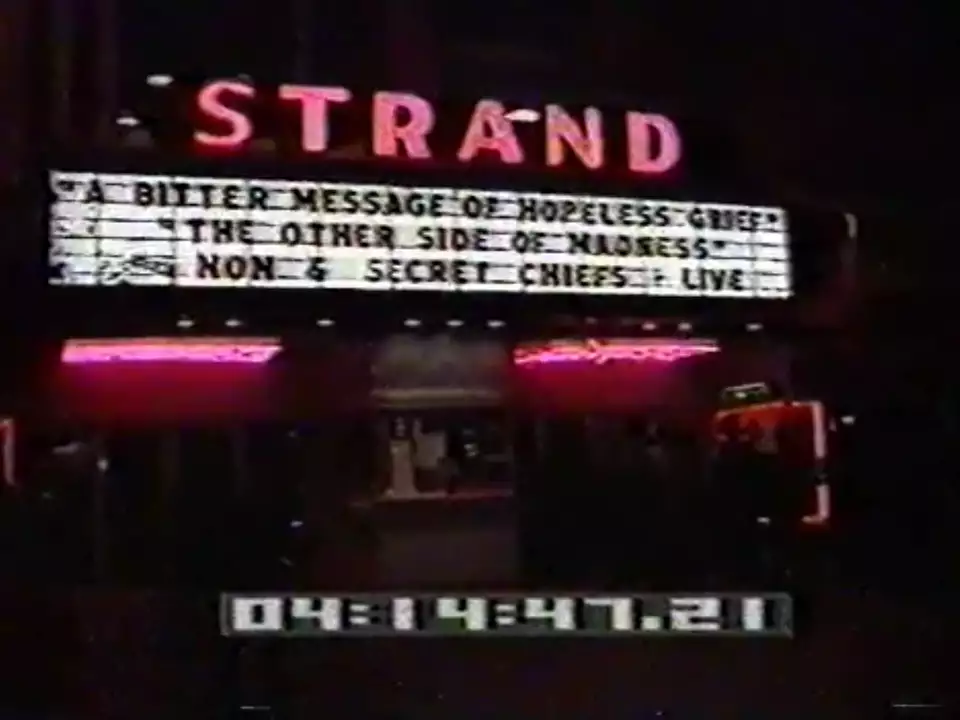
The marquee of the San Francisco Strand Theater. Mentioned are two films: animation A Bitter Message of Hopeless Grief by Jonathan Reiss (1988), and excellent Mansonsploitation drama The Other Side of Madness aka The Helter Skelter Murders by Frank Howard (1971). Also billed (what a night!) are NON and Secret Chiefs 3.Still (via). DP: ?.
Provocateur Boyd Rice and friends perform a Satanic rite on August 8, 1988; exactly 20 years minus one year minus one day after the Tate-LaBianca murders.
– Boyd Rice speaking to Geraldo Rivera (via)
Please note that the linked article is written by an dimwitted ignoramus completely oblivious of Boyd Rice's, and Anton LaVey's, prankster background.
Paparazzi (Jacques Rozier, 1963/1964)
Jul
29

Brigitte Bardot and her co-star Michel Piccoli making a show of ascending the stairs of Casa Malaparte as seen through a paparazzo's lens. DP: Maurice Perrimond.
A character has a camera or takes photos*
It buzzes on the set of Le mépris. These mosquitos, the Italians say paparazzi, swarm La Bardot and making it merely impossible for anyone – themselves included – to do their job. But Bardot knows them, too well, and gives them what they want, when she wants it.
* the Bales 2025 Film Challenge for July is, for unknown reasons, mostly not date-related and follows some sort of vacation narrative.